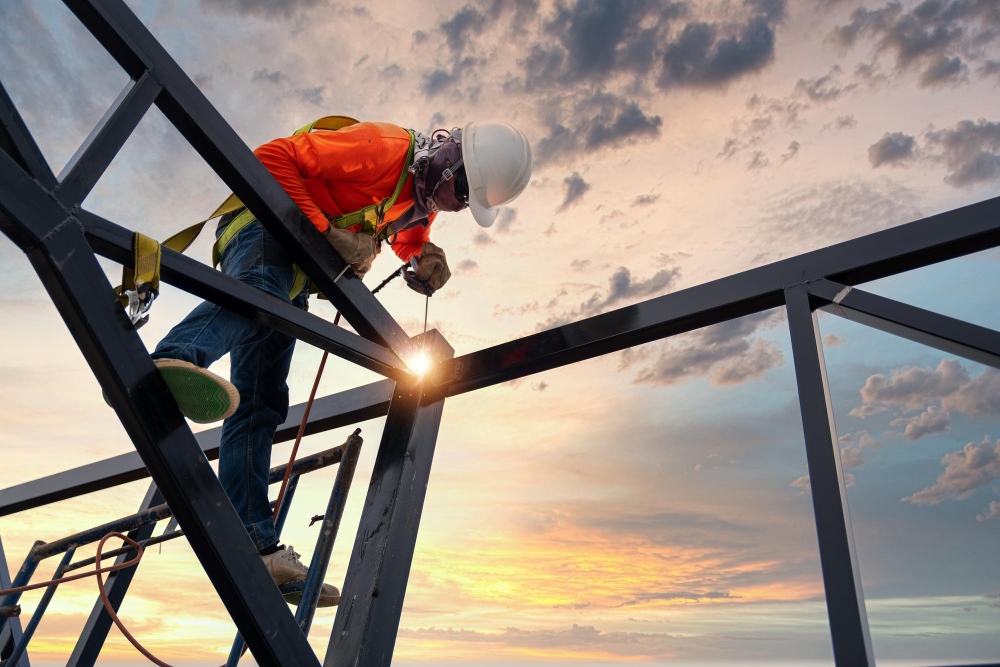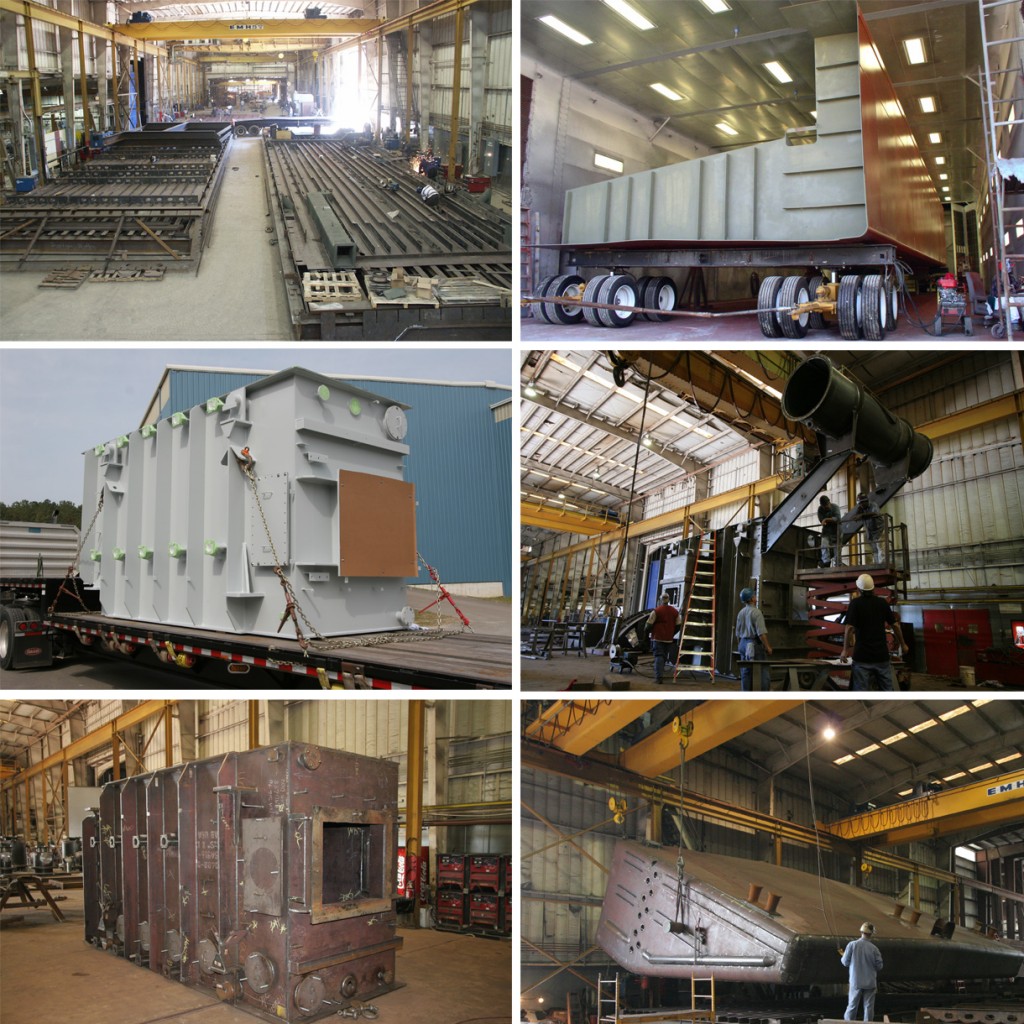Metal Fabrication Melbourne: Accuracy Design for All Requirements
Metal Fabrication Melbourne: Accuracy Design for All Requirements
Blog Article
Comprehensive Analysis of Cutting-Edge Techniques in Steel Manufacture Sector
As the steel fabrication sector continues to advance, the combination of cutting-edge strategies has become crucial for staying affordable and meeting the needs of contemporary production requirements. From laser reducing improvements to the utilization of robotics and 3D printing in steel manufacturing, the landscape of construction techniques is quickly changing. With each advancement bringing its own set of challenges and advantages, a thorough analysis of these strategies is critical for firms aiming to enhance their procedures, boost precision, and inevitably, elevate the high quality of their steel fabrication outcome. In this dynamic industry where modern technology plays a pivotal function, recognizing the nuances of these advanced techniques is not just an alternative yet a necessity for those seeking to build in advance in the ever-evolving world of steel construction.
Laser Cutting Developments
In the realm of steel construction, laser cutting improvements have reinvented the precision and effectiveness of metal shaping processes. By utilizing the power of concentrated laser beams, producers can now achieve unrivaled levels of accuracy when cutting through various types of steels. This modern technology allows complex styles to be performed with very little product waste, making it an economical service for industries calling for high accuracy elements.
One of the key benefits of laser cutting is its capability to deal with a wide variety of products, including stainless steel, light weight aluminum, and carbon steel, with ease. The process generates clean, burr-free sides, getting rid of the need for added completing steps. In addition, the non-contact nature of laser cutting minimizes the risk of product contamination, resulting in better end products.
In addition, laser cutting machines can be configured to make swift, accurate cuts, considerably reducing production time contrasted to conventional cutting approaches. This speed and precision make laser reducing particularly ideal for mass production atmospheres where efficiency is vital. As technology continues to breakthrough, laser cutting is poised to play a progressively vital function in the steel manufacture industry.

CNC Machining Innovations
The advancement of CNC machining innovations has actually ushered in a new age of accuracy and efficiency in the steel fabrication market. Computer System Numerical Control (CNC) equipments have changed steel construction by using unparalleled accuracy and repeatability in the manufacturing process. metal fabrication melbourne. One of the key developments in CNC machining is the assimilation of advanced software systems that enable real-time monitoring and modifications, causing improved efficiency and quality assurance
Moreover, the development of multi-axis CNC machines has allowed for the fabrication of complex steel components with intricate layouts that were previously testing to generate. These makers can execute a vast array of machining procedures, including milling, drilling, transforming, and grinding, all with high degrees of accuracy.
Furthermore, the consolidation of automation and robotics in CNC machining has streamlined manufacturing procedures, minimized lead times, and reduced the margin of error. This integration of cutting-edge modern technologies not just increases efficiency but additionally makes sure constant quality throughout all made steel parts. To conclude, CNC machining innovations remain to drive improvements in the steel construction industry, establishing new requirements for precision and performance.
Automated Welding Technologies
Automated welding innovations have changed the steel construction industry, boosting effectiveness and accuracy in the welding process. These sophisticated innovations utilize computer-controlled systems to automate the welding procedure, leading to greater productivity degrees and improved weld top quality. One of the vital benefits of automated welding is the capacity to carry out intricate welds with constant precision, decreasing the chance of errors and revamp.
Robotic welding systems go to the forefront of automated welding innovations, offering unequaled rate and precision. These systems can take care of a broad variety of welding jobs, from basic to detailed, effortlessly (Alpha reo). By using innovative sensors and software, robot welders can adjust to variants in product and joint geometry, making certain an attire and reliable weld
Moreover, automated welding modern technologies improve workplace security by reducing the direct exposure of human welders to hazardous fumes and intense warm. As the steel construction market remains to advance, incorporating automated welding technologies will be crucial for companies aiming to stay competitive and meet the growing demands for premium welded products.
Robotics Combination in Construction
Making use of robot systems in manufacture procedures has actually come to be a crucial approach for boosting effectiveness and precision in contemporary manufacturing environments. Robotics integration in steel fabrication offers a myriad of benefits, including raised performance, boosted top quality control, and improved precaution. These advanced robotic systems are equipped with innovative sensing units and programs capacities, permitting them to do elaborate tasks with a high level of precision and repeatability.
One of the key benefits of robotics combination in steel construction is the capability to automate repetitive jobs, such as product handling, cutting, welding, and setting up procedures. This not only quickens manufacturing cycles but additionally lowers the danger of human error, bring about higher overall item high quality. Additionally, robotics can operate 24/7, dramatically improving production result and meeting tight job deadlines.

3D Printing in Steel Manufacturing
Having actually revolutionized the steel construction market via robotics integration, the growing expedition of 3D printing in steel production is poised to additional development the world of modern manufacturing methods. 3D printing, likewise called additive production, supplies unmatched layout liberty and intricacy, allowing the development of intricate steel frameworks that were formerly unattainable through see here conventional manufacturing methods. By using computer-aided layout (CAD) software program, makers can specifically control the layer-by-layer deposition of steel material, resulting in parts with boosted performances and geometries.
One of the look at this site key advantages of 3D printing in steel production is its capability to minimize product waste significantly. Unlike subtractive production procedures where excess product is trimmed away, 3D printing only uses the required amount of steel needed for the last part. This effectiveness not only leads to cost savings yet additionally lines up with lasting production techniques by minimizing environmental effect.
In addition, 3D printing enables fast prototyping and customization, permitting the production of small batches of complex steel parts with brief lead times. As the innovation remains to grow and end up being much more easily accessible, its integration into mainstream steel fabrication procedures is anticipated to drive advancement and performance throughout the industry.
Final Thought
In final thought, the steel manufacture sector has actually seen considerable innovations in strategies such as laser cutting, CNC machining, automated welding, robotics assimilation, and 3D printing. These sophisticated modern technologies have reinvented the way steel items are produced, causing boosted efficiency, accuracy, and cost-effectiveness. Continued investment in these innovative techniques is vital for the market to remain competitive and satisfy the needs of modern-day production processes.
As the steel fabrication industry proceeds to advance, the combination of cutting-edge strategies has actually ended up being crucial for remaining affordable and satisfying the demands of modern Recommended Reading manufacturing criteria.One of the key benefits of laser cutting is its capacity to handle a large variety of materials, consisting of stainless steel, aluminum, and carbon steel, with ease.Automated welding modern technologies have actually transformed the steel manufacture sector, improving performance and precision in the welding process.Having reinvented the steel construction industry through robotics integration, the burgeoning exploration of 3D printing in steel manufacturing is poised to additional breakthrough the realm of contemporary manufacturing methods.In final thought, the steel fabrication industry has seen substantial advancements in techniques such as laser cutting, CNC machining, automated welding, robotics integration, and 3D printing.
Report this page